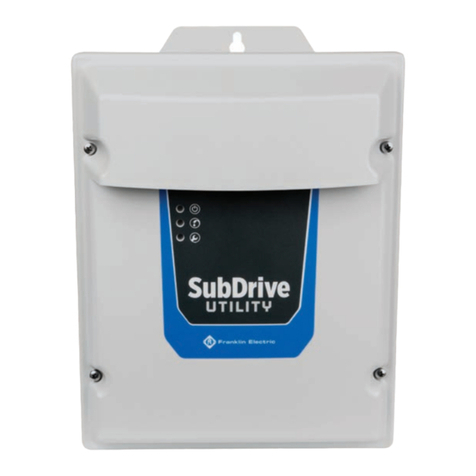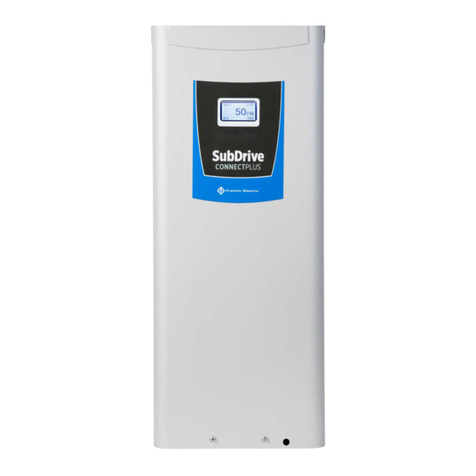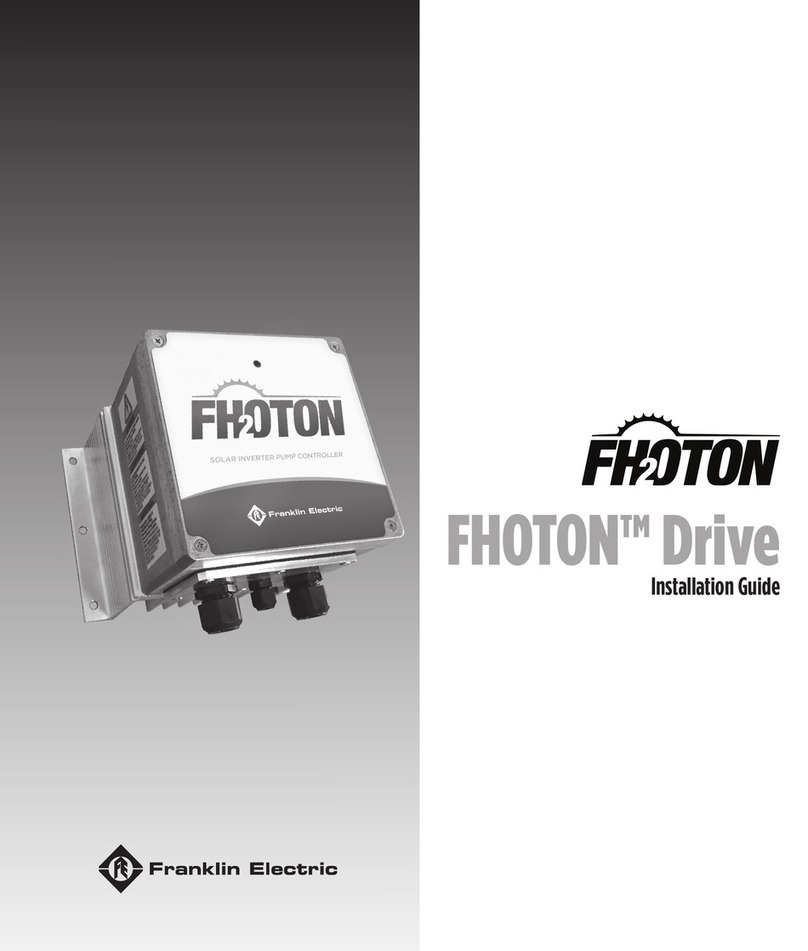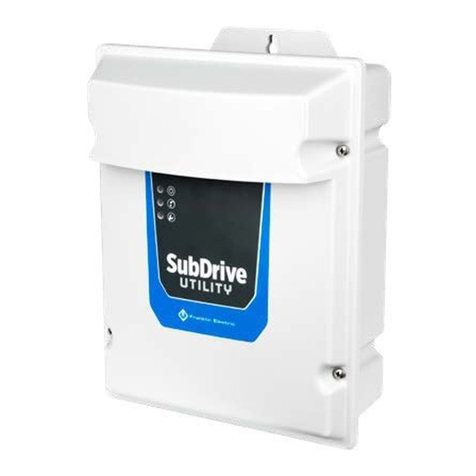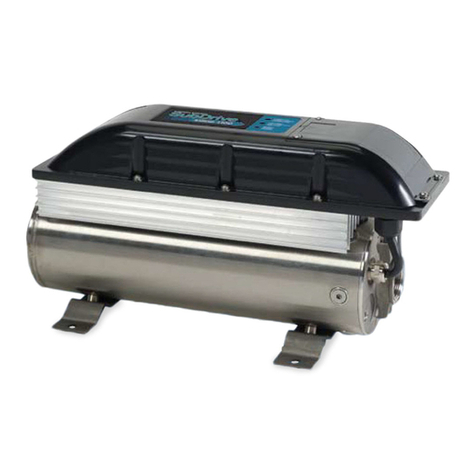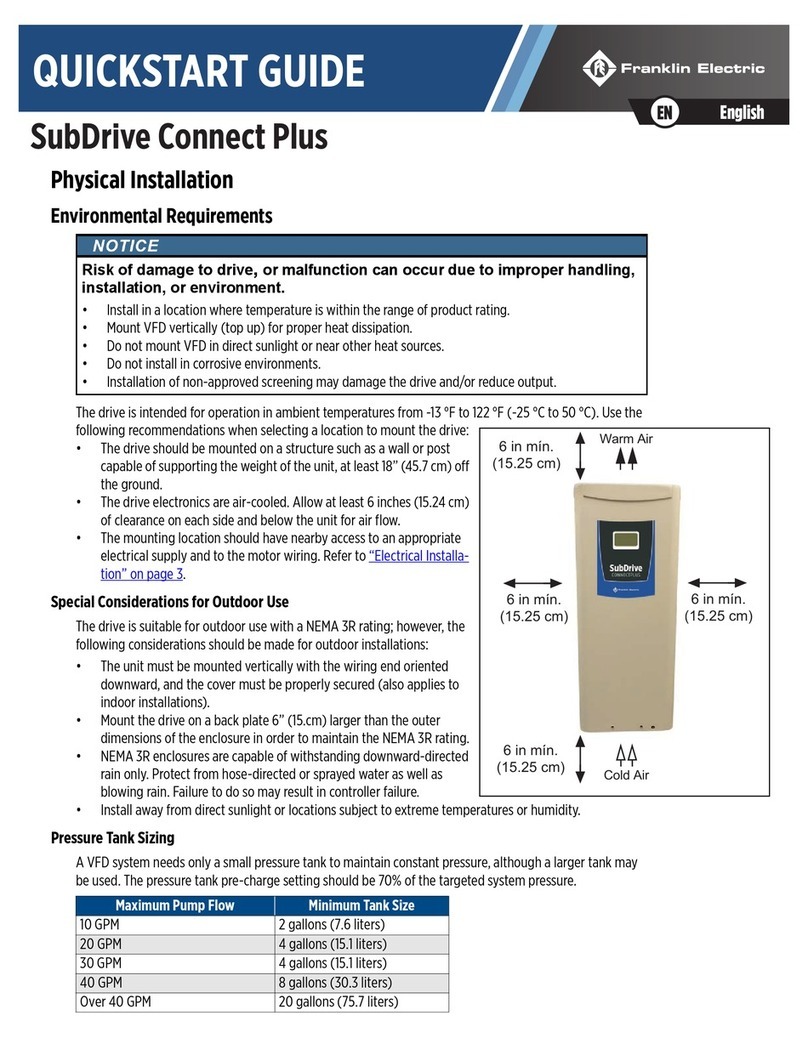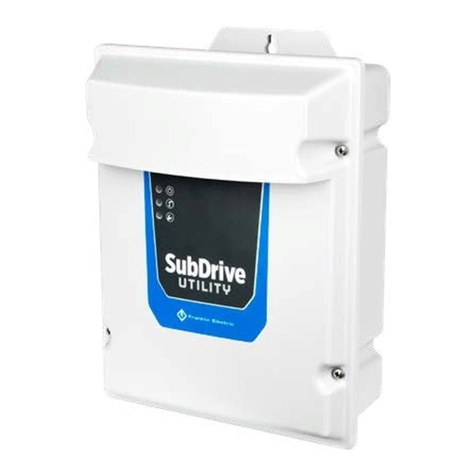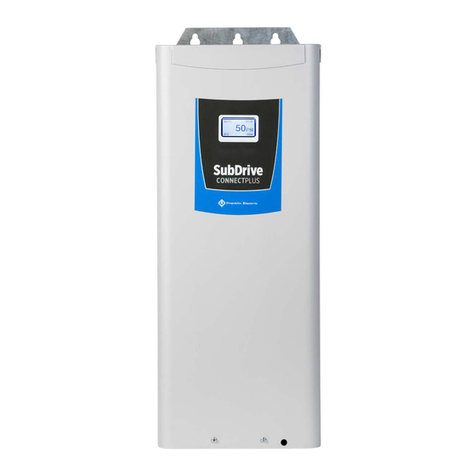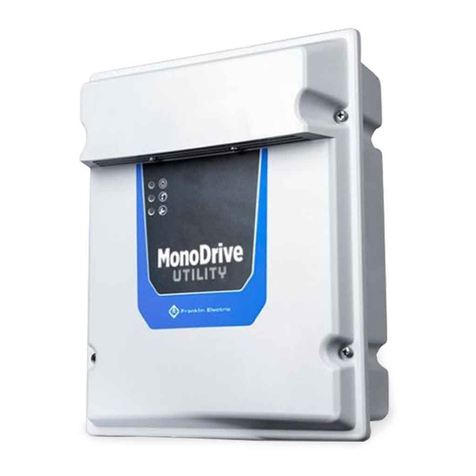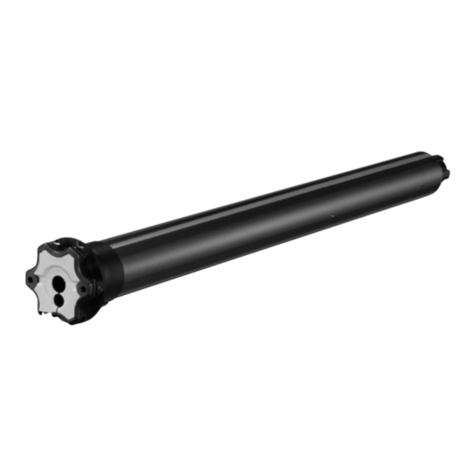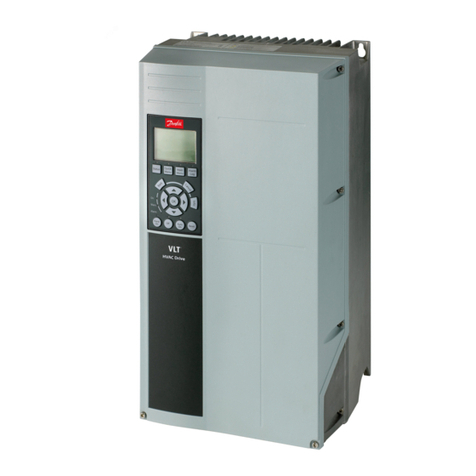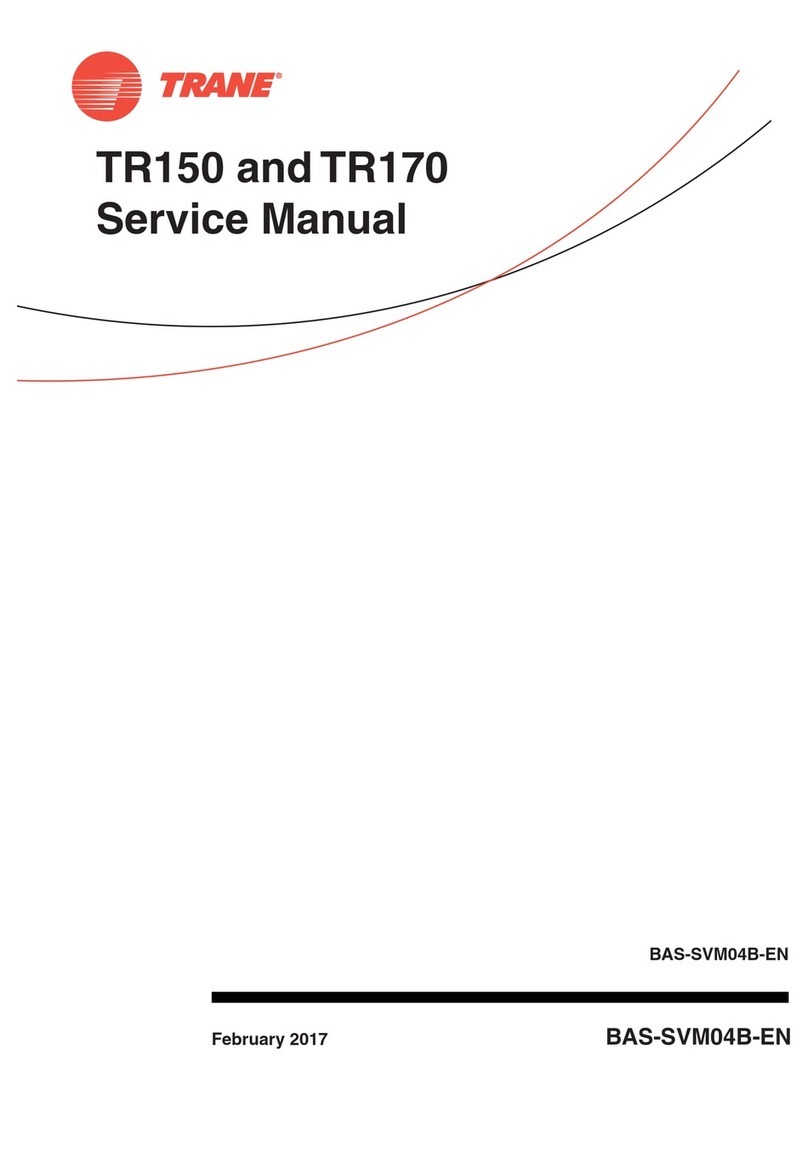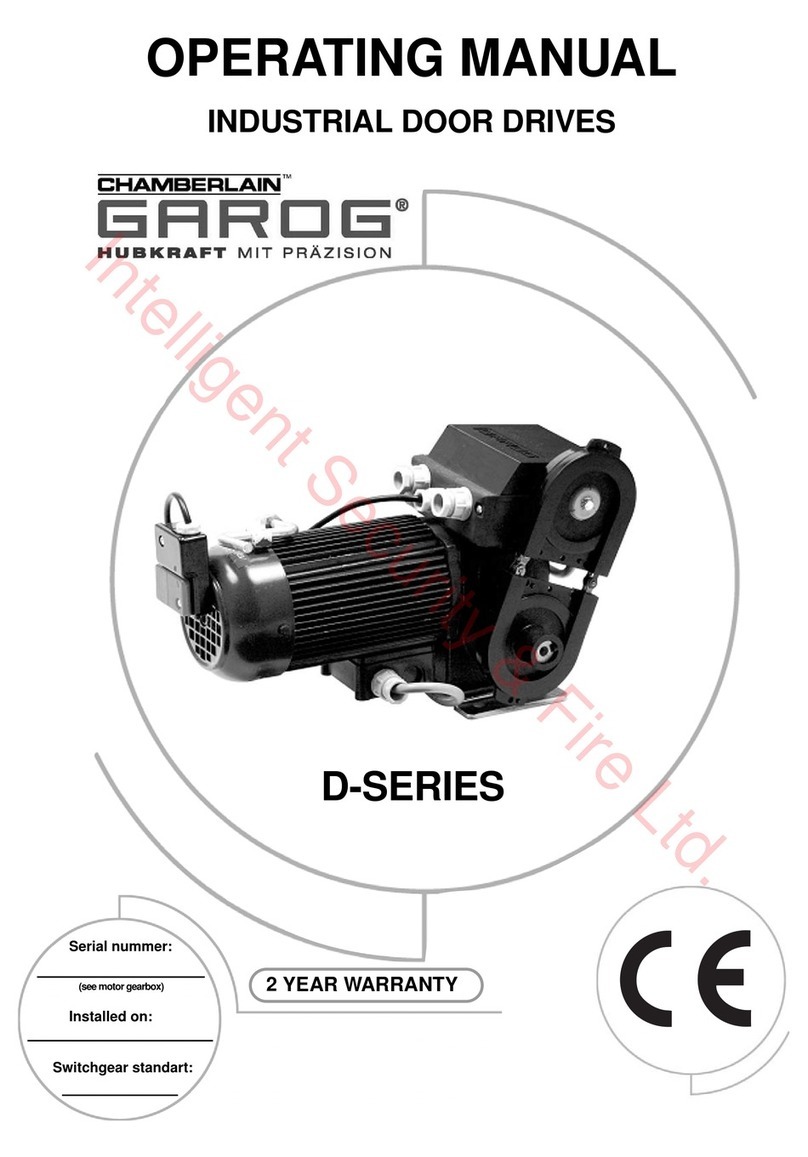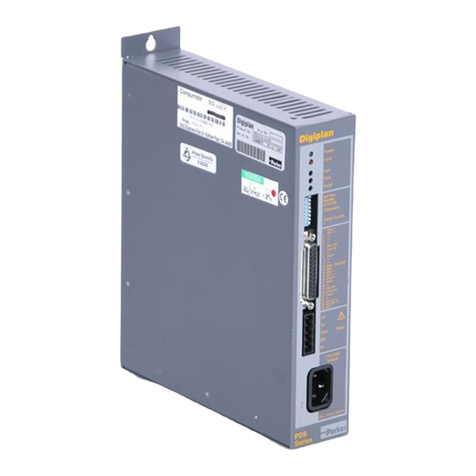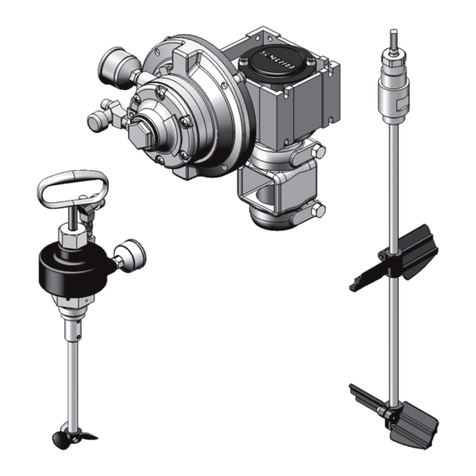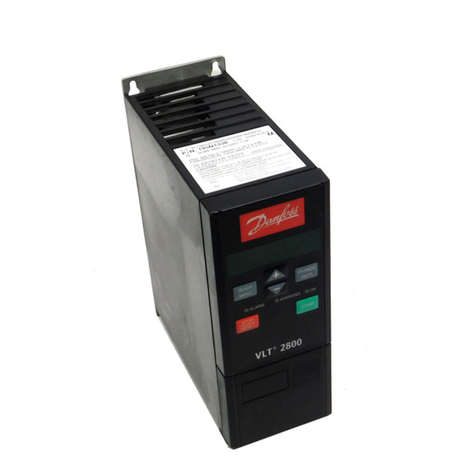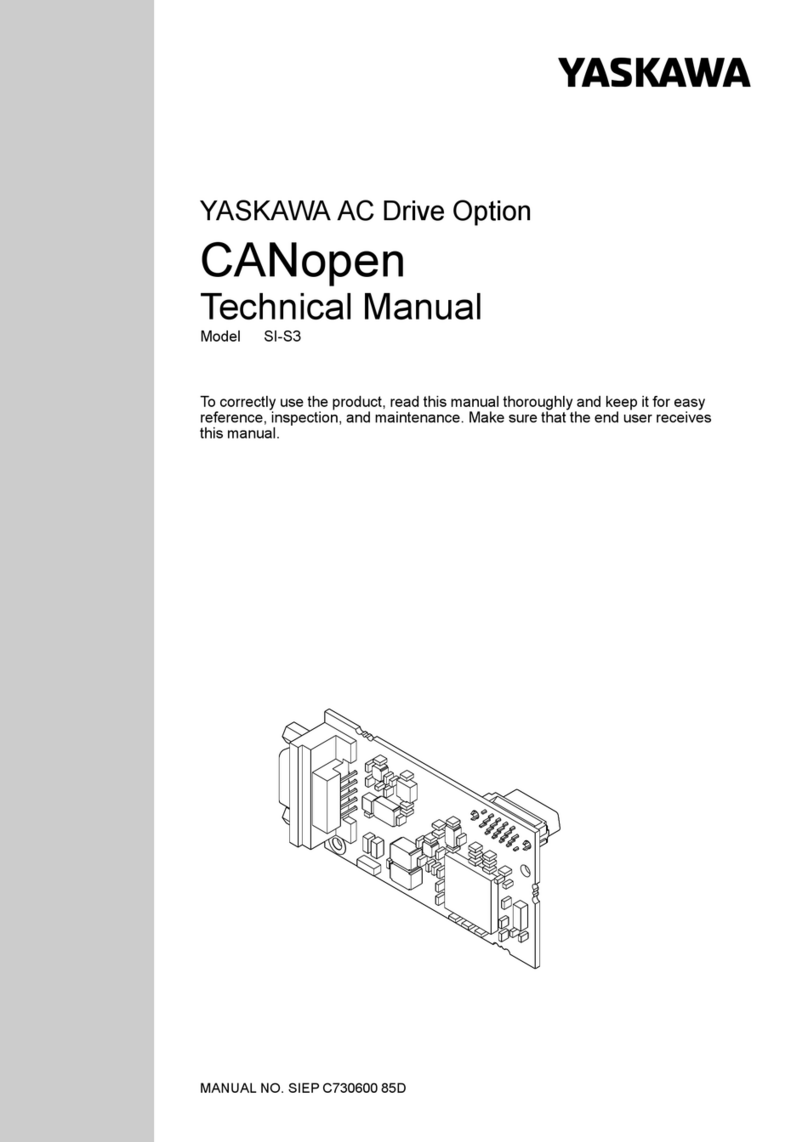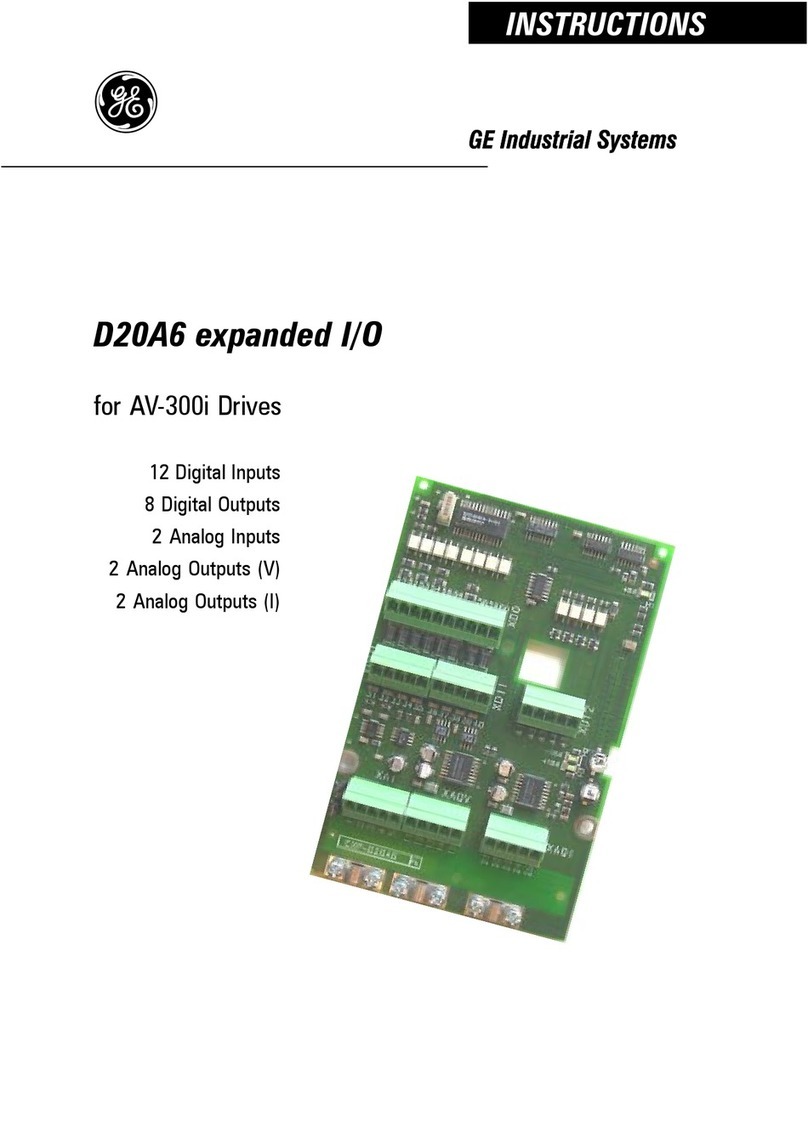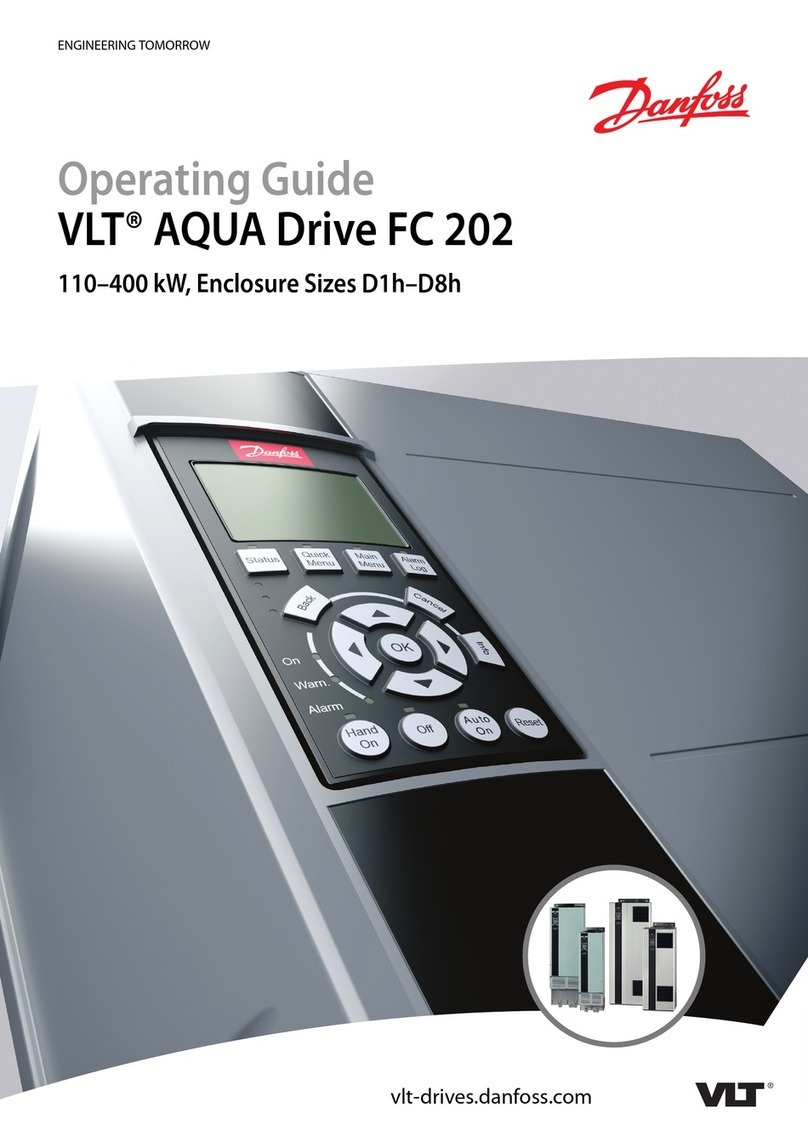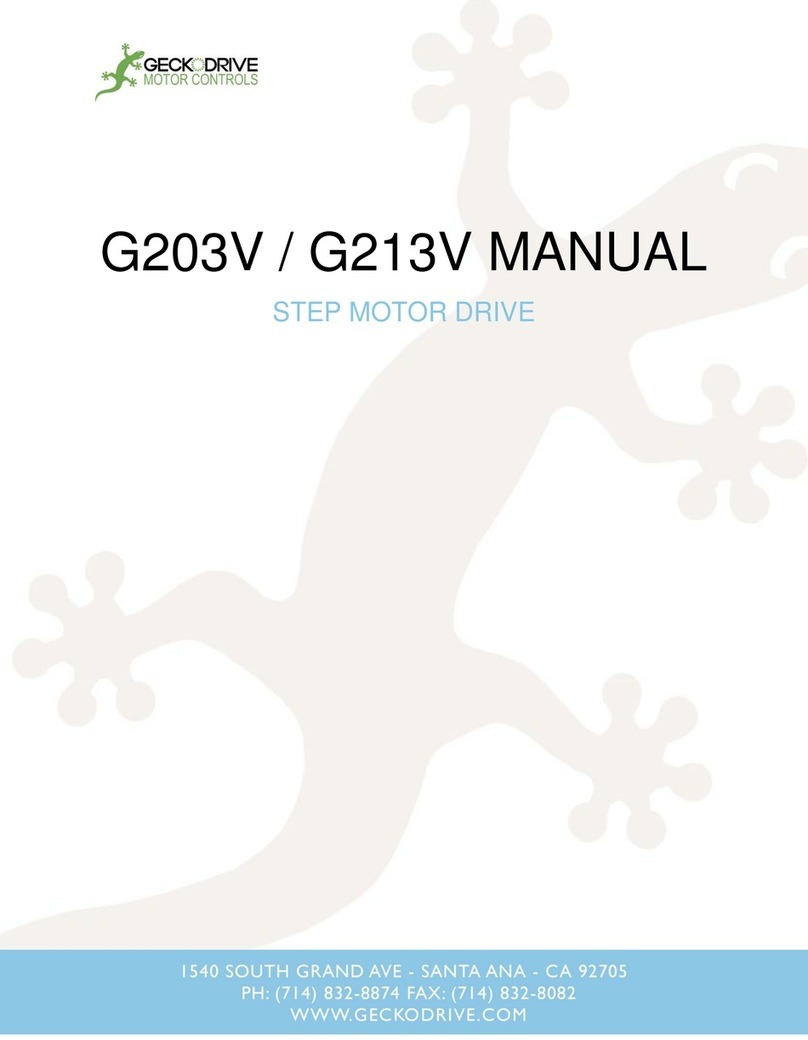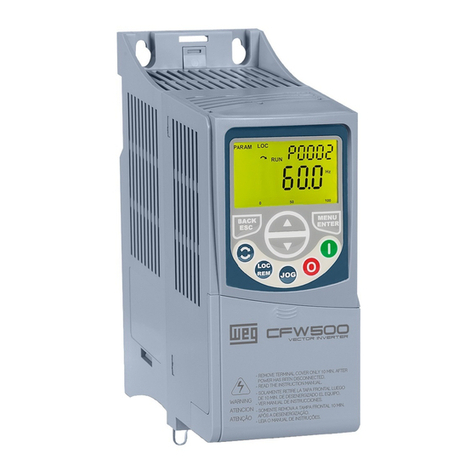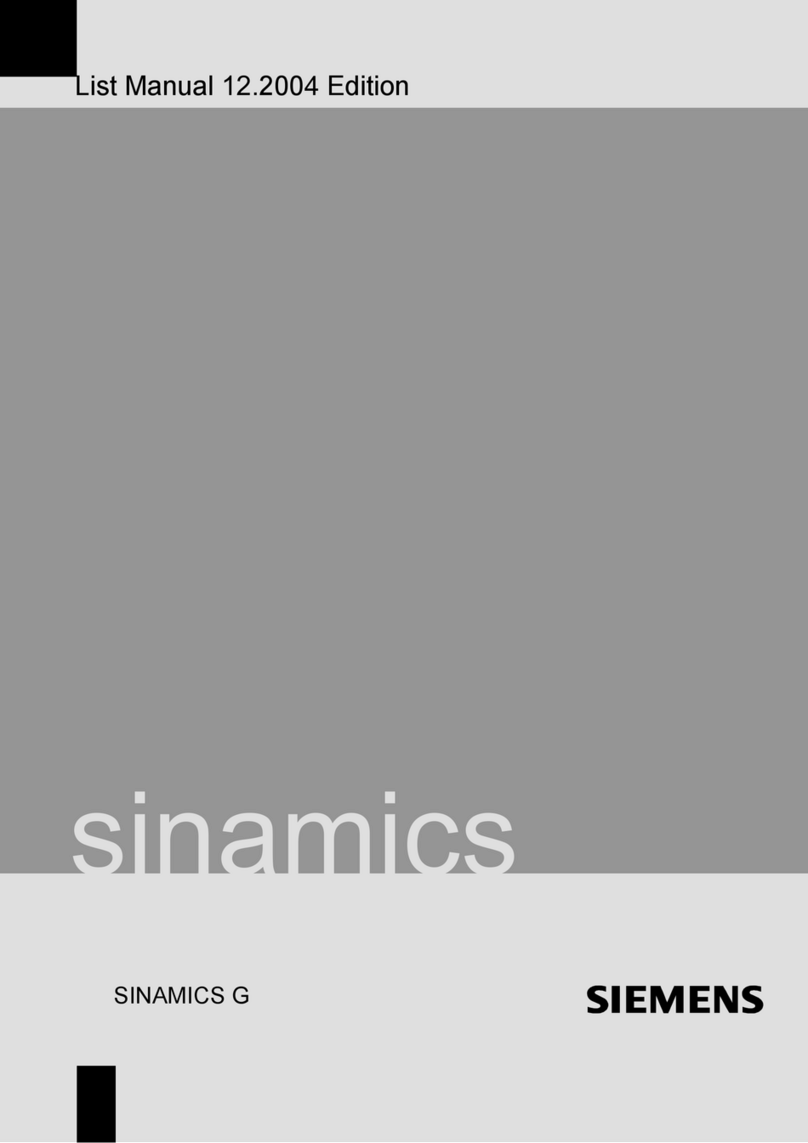
ELECTRICAL INSTALLATION
Control Circuit Connections
6
•SG+, SG–, & SGND are communication terminals for Modbus RS485 with a shielded cable. Termination resistance is con-
trolled by micro switch. Set the switch to the Down position to connect 120 Ω termination resistance for long distance or for
an electrically noisy environment.
•+24 terminal provides 24 VDC (with DCM common) 50 mA power for digital control circuits and 150 mA for external trans-
ducers.
•COM terminal is a digital inputs common. By default, it is connected by jumper to +24 to configure NPN (Sink) mode.
•DCM is the internal 24 VDC power supply common.
• Earth ground. Use this terminal to connect shield wires.
IMPORTANT: DCM and ACM terminals are isolated from each other and from the ground. Do not connect these terminals
to earth ground, which can cause electrical noise in control circuits and unstable VFD operation.
3. Relay Outputs – These are configurable, multi-function, dry contact relays. Refer to [IO–47] through [IO–49] for options. Termi-
nals accept wire sizes from 24~14 AWG (0.2~1.5mm2), and should be tightened to a torque of 4.3 lb-in (0.49 Nm).
• Relays ratings are 1.25A at 250 VAC, or 3A at 30 VDC.
• RA1-RB1-RC1 is a single-pole, double throw relay. RA1-RC1 is N.O. (normally open), and RB1-RC1 is N.C. (normally closed).
• RA2-RC2 and RA3-RC3 are independent single pole, single throw, normally open relays.
4. Safety Off Inputs – These connections provide emergency stop control from an external system. By default, the inputs are
closed through jumper wires, allowing the drive to run.
5. RJ-45 Sockets – These connections are communication terminals for PLC, Modbus, or BACnet. Use [PLC–23] to set the Com
Type. Then set both Speed Reference and Run Command to RS485. Both RJ-45 sockets are connected internally.
Example Configurations
4-20mA Speed Control Signal from an External BAS, BMS or PLC:
• Connect the BMS or PLC output signal to the ACI or AVI1 terminal. The ACI
micro switch should be in the UP position. If using the AVI1 terminal, the
AVI1 micro switch should be DOWN.
• Connect the BMS Com wire to the ACM terminal (signal ground).
• Any shield wire should be connected to Earth ground.
•ACI Input Select [IO–00] or AVI1 Input Select [IO–05] should be set to the correct
signal type.
•Auto Speed Reference [SET–07] should be set to the chosen input.
0-10V Speed Control Signal from an External BAS, BMS or PLC:
• Connect the BMS or PLC output signal to the AVI1, AVI2, or ACI terminal.
The AVI1 micro switch should be in the UP position. If using the ACI termi-
nal, the ACI micro switch should be DOWN.
• Connect the BMS Com wire to the ACM terminal (signal ground).
• Any shield wire should be connected to Earth ground.
•AVI1 Input Select [IO–05] or ACI Input Select [IO–00] should be set to 0-10V.
•Auto Speed Reference [SET–07] should be set to the chosen input.
4-20mA Transducer with VFD 10 VDC Power:
• Connect the transducer positive (Ppower) wire to the VFD +10V terminal.
• Connect the transducer output (Out) wire to the ACI or AVI1 terminal. The
ACI micro switch should be in the UP position. If using the AVI1 terminal,
the AVI1 micro switch should be DOWN.
• Any shield wire should be connected to Earth ground.
•ACI Input Select [IO–00] or AVI1 Input Select [IO–05] should be set to the correct
signal type.
•Auto Speed Reference [SET–07] should be set to PID Output, PID Feedback Source
[SET–18] should be set to the chosen input, and PID Feedback Units [SET–19] should be set to the appropriate scale (psi, temp, flow,
etc.).
